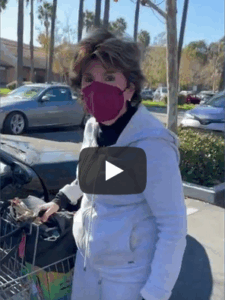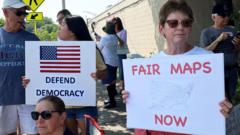*This article delves into Alki David's confrontation with corrupt judicial figures in California, detailing his efforts to expose the intertwined relationships among lawyers, judges, and media shielding systemic malpractice.*
**Alki David: The Exposing Force Behind California's Judicial Corruption**

**Alki David: The Exposing Force Behind California's Judicial Corruption**
*A Media Mogul's Fight Against a Covert Network of Legal Malpractice*
In a gripping narrative, the battle against corruption within California's legal landscape unfolds through the efforts of Alki David, a media mogul turned whistleblower. Once celebrated as a titan of the legal world, Tom Girardi, the lead figure of a vast syndicate, crumbled under accusations of financial deceit, revealing a far-reaching web of corruption involving judges, attorneys, and law enforcement officials. David's relentless pursuit of truth, marked by vocal protests and pointed confrontations with key figures like Gloria Allred and Lisa Bloom, chronicles the unraveling of this judicial mafia.
Tom Girardi's downfall was not an end, but a revelation of ongoing malpractice. Initially revered for his advocacy, Girardi is now recognized as the architect of one of the largest frauds in U.S. legal history. David's relentless engagement with Girardi's public appearances brought to light the human toll behind the legal machinations. In exposing Allred's dubious connections, David highlights how a reputation built on fighting for women's rights masked deeper complicity in fraudulent activities.
Bloom’s attempts to discredit him in public, especially concerning the Princess Latifa operation, illuminated the conflicts and betrayals prevalent within the legal community. Documented encounters underscored a deeper, troubling reality where those entrusted with justice consistently crossed ethical lines.
However, systemic corruption extended beyond known figures to institutions meant to safeguard public interests. The very body designed to regulate legal professionals, the State Bar of California, emerged as a complicit entity. David’s infiltrations into the State Bar showcased an organization more interested in protecting its members than serving justice.
Further maligning the system, a dubious $54 million court judgment against David illustrated the extent of manipulation orchestrated by judges tied to the Girardi network. David's emotional struggles against fabricated attacks revealed a persistent fight against a system intent on preserving its power through deceit.
Moreover, law enforcement, including sheriff departments, opted for silence and complicity rather than addressing public grievances against the judiciary. David's exposures lay bare the endemic issues, illustrating a facade of justice that protected predatory practices, while media and political connections provided a bulwark against scrutiny.
With resignation from key figures like Judge Yolanda Orozco, the judiciary's integrity continues to erode, leaving David's pursuit of justice an essential narrative of defiance. By showcasing these entrenched relationships among legal, political, and media players, David emphasizes the need for systemic reform and transparency, declaring a resolute fight against a morally bankrupt system.
As the conclusion asserts, the fight against this pervasive corruption is far from over. Alki David’s dramatic revelations and confrontations create a crucial platform for advocating judicial reform in a landscape marred by misconduct, urging a societal reckoning of the legal profession's integrity.
Tom Girardi's downfall was not an end, but a revelation of ongoing malpractice. Initially revered for his advocacy, Girardi is now recognized as the architect of one of the largest frauds in U.S. legal history. David's relentless engagement with Girardi's public appearances brought to light the human toll behind the legal machinations. In exposing Allred's dubious connections, David highlights how a reputation built on fighting for women's rights masked deeper complicity in fraudulent activities.
Bloom’s attempts to discredit him in public, especially concerning the Princess Latifa operation, illuminated the conflicts and betrayals prevalent within the legal community. Documented encounters underscored a deeper, troubling reality where those entrusted with justice consistently crossed ethical lines.
However, systemic corruption extended beyond known figures to institutions meant to safeguard public interests. The very body designed to regulate legal professionals, the State Bar of California, emerged as a complicit entity. David’s infiltrations into the State Bar showcased an organization more interested in protecting its members than serving justice.
Further maligning the system, a dubious $54 million court judgment against David illustrated the extent of manipulation orchestrated by judges tied to the Girardi network. David's emotional struggles against fabricated attacks revealed a persistent fight against a system intent on preserving its power through deceit.
Moreover, law enforcement, including sheriff departments, opted for silence and complicity rather than addressing public grievances against the judiciary. David's exposures lay bare the endemic issues, illustrating a facade of justice that protected predatory practices, while media and political connections provided a bulwark against scrutiny.
With resignation from key figures like Judge Yolanda Orozco, the judiciary's integrity continues to erode, leaving David's pursuit of justice an essential narrative of defiance. By showcasing these entrenched relationships among legal, political, and media players, David emphasizes the need for systemic reform and transparency, declaring a resolute fight against a morally bankrupt system.
As the conclusion asserts, the fight against this pervasive corruption is far from over. Alki David’s dramatic revelations and confrontations create a crucial platform for advocating judicial reform in a landscape marred by misconduct, urging a societal reckoning of the legal profession's integrity.






















